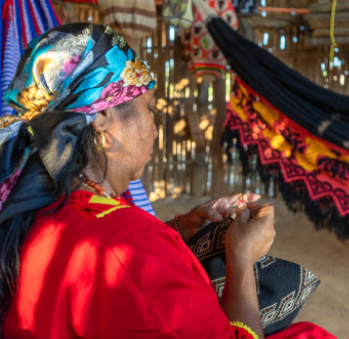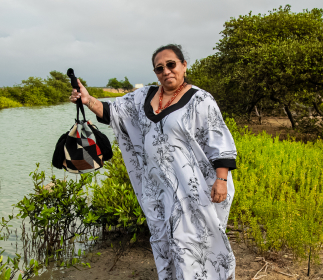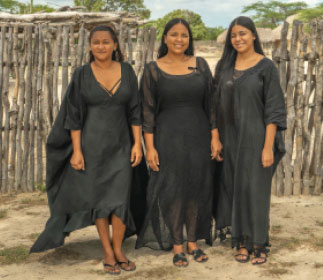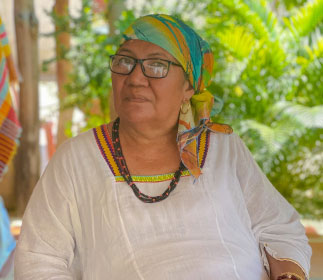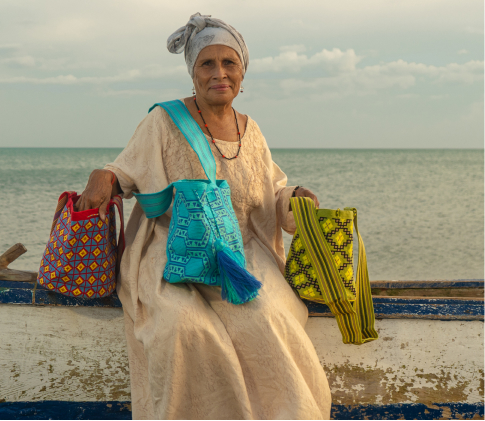Carmen Palmar
Workshop: Taller Artesanal Aluatachon
Craft: Tejeduría
Trail: Riohacha - Nazareth Route
Location: Uribia, La Guajira
SCHEDULE YOUR VISIT
Km 53 via uribia comunidad aluatachon
3122493104
3122493104
mezapalmar08@gmail.com
When she was 12 years old, her life changed forever. With the arrival of her first menstruation, she began a long period of confinement. She lived for three years in the municipality of Uribia, in La Guajira, under the care of her mother and grandmother. They lived in a house made of mud and a sort of dried cactus wood known as yotojoro. She spent 1,095 days without seeing the sun and many nights learning about Wayúu weaving. She mastered how to make chinchorro hammocks and mochila bags, as well as the art of spinning cotton yarns. She imagined a whole world and recorded the passing of the days in her designs. She understood that her confinement was meant to prepare her to take on the responsibility of inheriting her family’s wisdom.
When this long period of time was over, Ms. Elvira Uriana, her mother, announced to their society, community, and customers —the men that purchased loincloths from her— that her daughter was already able to craft wares that had the same quality as hers. She also told them that her daughter was ready to start her own home. Carmen continued with her mother’s business. She bartered, as many craftswomen did. She used to exchange a loincloth for a goat, a small chinchorro for a couple of young goats, and a large chinchorro for a cow. She also ventured to Manaure, Maicao and Riohacha to sell her wares.
Carmen believed that a woman could earn a decent livelihood, provide for her family and not expect a man to support her. The community elders saw her disposition. Once her children were born, they decided she was self-sufficient enough to appoint her as an artisan authority in their village. She also chose to take her knowledge of mochilas, chinchorros, canvas bags, fajones (belts), and loincloths outside of her region.
She ventured to her first fair in Bogotá in 1996. She made kaanás, woven drawings. She realized that her purpose was to teach others about the life she lived in La Guajira through her weavings. Every design made with geometric patterns symbolizes a piece of her culture. There are kaanás that depict the grandmother of the animals, star constellations, turtle shells, donkey genitals, snake trails, and fish eyes. The fact that Carmen only had sons and did not bear any daughters did not stop her from passing on her knowledge.
This is how Alberto, her eldest son, comes into the story. He told us that when he was a young man at boarding school, he realized that his mother’s weavings had provided him with education and wellbeing. He felt that the best way to thank her was to not only become her Spanish interpreter, but also to honor her life by learning to weave.
Thus, he and his brothers became weavers. He considers himself a worthy successor of the knowledge that came from his mother’s hands, like everybody else who also learned from her. Weaving is her book and her journal. She declares it so as follows: “I live in the present. There is no future for me because it is uncertain, so I live in the present. And, in the present, I have to teach, so that, someday, this history will continue.”
Craft






Artisans along the way
Artisans along the way
No puede copiar contenido de esta página














































